Mute swans are large, white waterfowl with orange and black beaks. They are beautiful and elegant birds, and people often feature them in plays, movies, literature, and more.
Unfortunately, because of this fame, these birds have become quite a nuisance in some areas. In fact, many places consider them a destructive and invasive species. Read on to learn about the Mute Swan.
Description of the Mute Swan
Like all swans, Mute Swans are quite large birds. Some individuals tip the scales at over 30 lbs. and their wingspan measures nearly 8 ft. across. These large swans have bright white feathers, long curved necks, and bright orange bills.
The base of this bird’s bill has a large black knob, which is often more prominent in males than in females. When threatened or while performing displays, these birds often raise their wings off their back to look larger.
Interesting Facts About the Mute Swan
These birds are quite large and striking. They are also notoriously graceful, and surprisingly aggressive! Learn more fun facts and interesting traits of Mute Swans below.
- Baby Swan – Baby ducks are also known as “ducklings,” and baby geese are also known as “goslings,” but baby swans are not known as swanlings. Instead, young swans are “cygnets.” Unlike their bright white parents, most cygnets are gray.
- “Mute” Swan – Despite their name, Mute Swans do make some noise. However, they are not quite as vocal as other swan species, such as trumpeter swans. Angry Mute Swans, particularly while they are nesting, produce some impressively loud hissing.
- Love Symbol – There are several reasons why people view swans as a symbol of love. While it helps that the curve of two swans necks often produces a heart shape, the true reason for the symbolism is their breeding behavior. Like many different species of waterfowl, Mute Swans are monogamous and pairs usually stay together for life.
- Parks & Gardens – This symbolism of love led Mute Swans into impressive popularity. Parks, gardens, and zoos across the world wanted swans. Because of this, hundreds of thousands of pairs arrived in North America and other areas of the world. Escaped birds established the invasive wild populations in North America today, in quite a similar fashion to the peacock.
Habitat of the Mute Swan
These massive birds inhabit many of the same habitats as other waterfowl. That includes lakes, estuaries, ponds, bays, rivers, streams, marshes, wetlands, and coastal seas.
They are also quite adaptable animals, which make them very successful, even outside of their native range. Swans live in retention ponds, city parks, and zoos in various regions.
Distribution of the Mute Swan
Mute swans originated in Europe, and a large population also lives in North America. Humans have also introduced these birds outside of the large invasive population in North America, but these populations are much smaller.
Some of the other introduced populations include Australia, Japan, and Africa. Overall, Mute Swans are relatively widespread, and quite successful where they are introduced.
Diet of the Mute Swan
The vast majority of this species’ diet is herbivorous, but they also feed on small aquatic creatures. They browse on eelgrass, algae, sea lettuce, pondweed, and other aquatic plants. On land, they graze on flowering grasses, grains, lettuce, and cracked corn.
Occasionally, they eat small fish, frogs, snails, insects, and larvae. While foraging, they dip their long necks below the water, or dabble upside down with their feet in the air.
“The Ugly Duckling”
Everyone knows the tale of the ugly duckling. The grey-colored swan who hatched with a clutch of adorable yellow ducklings faced ridicule – until he grew into a beautiful white swan.
The story is a heartwarming tale, and interestingly enough, some people believe the author based the fairytale on his own childhood. Hans Christian Anderson wrote The Ugly Duckling, and in his adolescence he was somewhat less that pined-after by the ladies.
Mute Swan and Human Interaction
Human and swan interaction is something of a mixed bag. While swans and humans coexist because people enjoy their looks, interactions are not always positive.
Humans have hunted swans for hundreds of years, but that is no longer a threat since the domestication and spread of the species. Instead, swans are proving to be a problem for people and other wildlife.
Pairs protecting their nests or babies are surprisingly aggressive, and will attack anyone who gets too close. A quick online search of “swan attacks” shows plenty of examples of this (not to mention quite a few goose attacks as well).
Though swan attacks aren’t particularly dangerous – they definitely aren’t grizzly bears – Mute Swans do pose a problem to native wildlife. Swan pairs out compete and chase away other species of birds, like common loons and trumpeter swans.
Domestication
People domesticated Mute Swans in Europe for use as food and pets. Prior to the invention of the pen, people also used swan feathers as quills.
Does the Mute Swan Make a Good Pet
Even though humans domesticate some birds, these swans do not make good pets. They are extremely territorial and quite large.
An angry swan is quite formidable, and it’s not advisable to cross a mother swan with cygnets. Because of their size, and disposition, Mute Swans do not make good pets.
Mute Swan Care
In zoological and park settings, Mute Swans absolutely thrive. They need plenty of space to swim, and lots of shallow water to forage in. Their lake or pond should have plenty of aquatic vegetation, and grasses or shrubs along the edges.
Zookeepers often feed them pelleted waterfowl diet as well to ensure they receive all the proper nutrients. In zoos, parks, and farms, Mute Swans breed readily.
Behavior of the Mute Swan
Most members of this species are social, and live in pairs for most of the year. Unpaired birds are sometimes solitary until they find mates. Though they don’t migrate in large numbers, they do congregate during the winter in large groups in some areas.
Pairs are highly territorial, especially while breeding. They chase virtually any type of animal, including other waterfowl, away from their territory.
Reproduction of the Mute Swan
When a pair of Mute Swans is ready to mate, they search for a nesting location. The nest is made of aquatic vegetation, and is built on a mound near the water. Most clutches contain between five and seven eggs, which the female incubates for a little over a month.
The male occasionally incubates the eggs, but usually takes the duty of guarding the female. The cygnets begin to fly when they are two months old, and stay with their parents until the next breeding season.


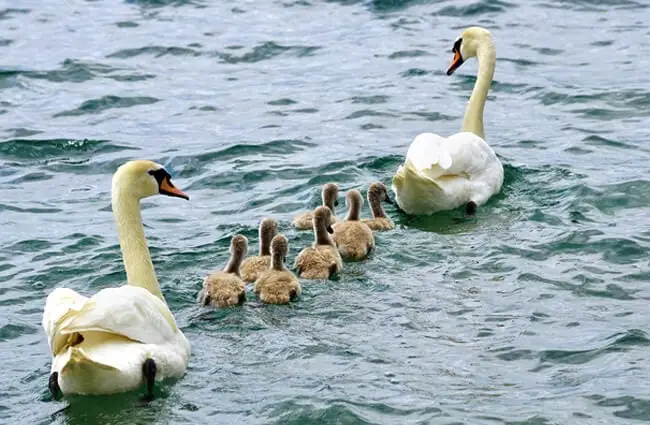

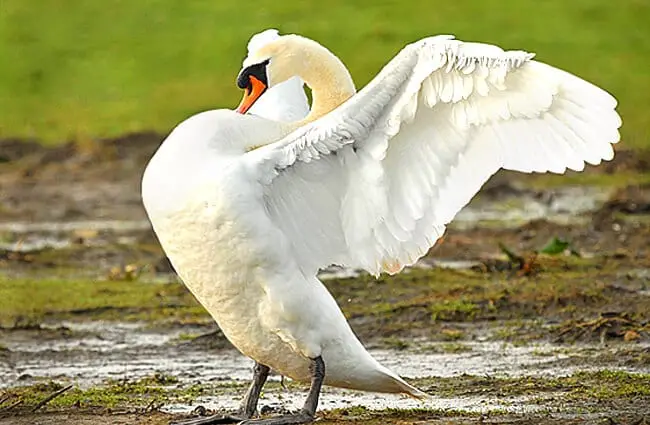
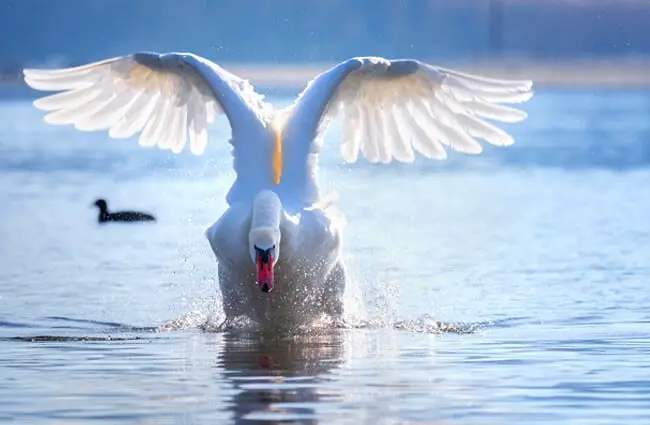

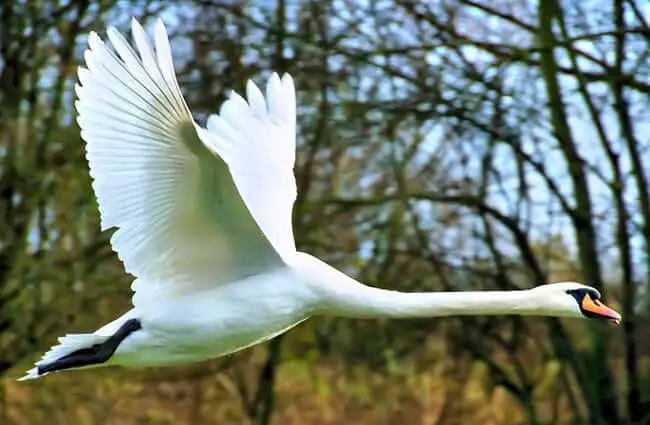


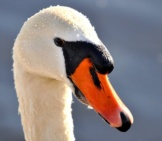

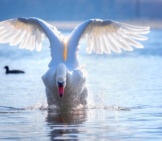
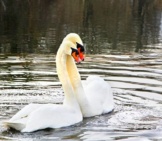
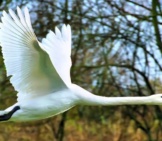


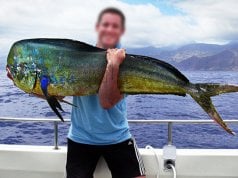










![Red Angus Closeup of a beautiful Red Angus cowPhoto by: U.S. Department of Agriculture [pubic domain]https://creativecommons.org/licenses/by/2.0/](https://animals.net/wp-content/uploads/2020/03/Red-Angus-4-100x75.jpg)

